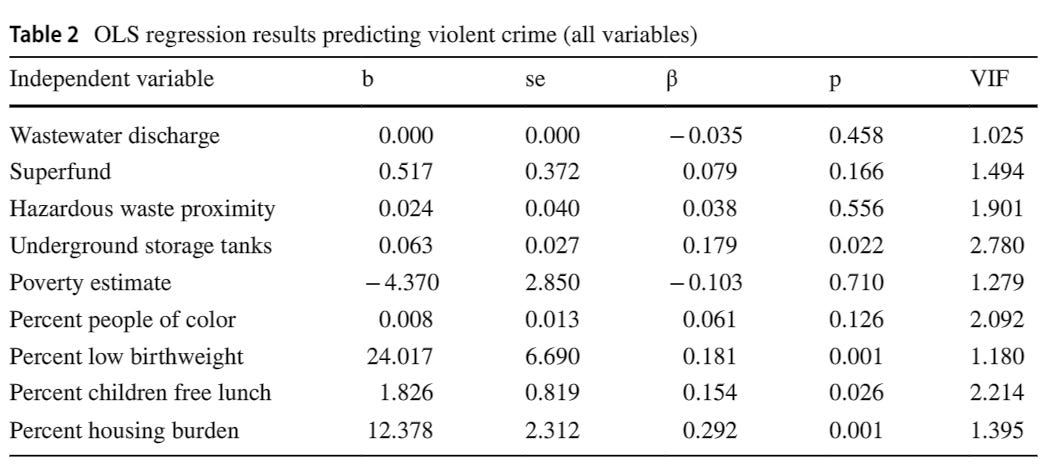About 'Ecological and social correlates of violent crime'
bad stats promote woke agenda, who would've thought
A new paper has begun to circulate on twitter:
Henderson, Howard & Smith, Sven & Pitts, John & Fockler, Carley. (2023). Ecological and social correlates of violent crime. SN Social Sciences. 3. 10.1007/s43545-023-00786-5.
Resilient communities often experience deprivation in multiple areas. Understanding how these areas relate to each other can help policymakers develop effective interventions that target multiple issues, even if the primary focus is a single outcome, such as violent crime. The present study examines counties in Texas, California, Arizona, and Pennsylvania to explore how environmental and social factors are associated with increased violent crime. Our results indicated that violent crime in these counties were predicted by the presence of leaking storage tanks, along with the percentage of low-birthweight pregnancies, housing burden, reduced reading scores, and percentage of children in free lunch programs. In path analysis, environmental factors predicted both individual wellness and violent crime. These results suggest that ecological and social predictors of crime intertwine in important and complicated ways that warrant further examination and policy response.
The idea is pretty simple: they used regression analysis to determine which county variables were associated with violent crime in the USA. These were the results:
Poverty/race are not associated with violent crime, but low birthweight, housing burden, and pollution variables were associated with violent crime.
The obvious problem here is that variables related to national development (e.g. national IQ, gdp per capita) covary very highly because of the existence of the s-factor, the general factor of social development. Because of that, it’s very difficult to make exact conclusions about which variables are causal variables and which aren’t. Regressions with a lot of covarying variables also risk controlling for mediators: low s-factor may be causing pollution, which causes increases in crime. Controlling for pollution causes s-factor variables to not reach significance, even if they are a causal variable in theory.
“People of color” is a terrible variable; it’s important to distinguish Asians, Hispanics, and Blacks. This variable should in theory correlate with crime, but it’s an imperfect measurement and individual racial variables (e.g. Black / White / Hispanic / Asian) should be used. For what it’s worth, with just racial variables you can predict homocides between states at r = .89. This is much higher than the R for the model in the paper (.53), though the dependent variables are not the same and states are used instead of counties.






I have never seen "people of color" used as a variable. It is as useless statistically as it is politically. They could have used "BIPOC," but they didn't. It used to be "POC" until they realized that Asians are model-minority puppets of White Supremacy.
cool